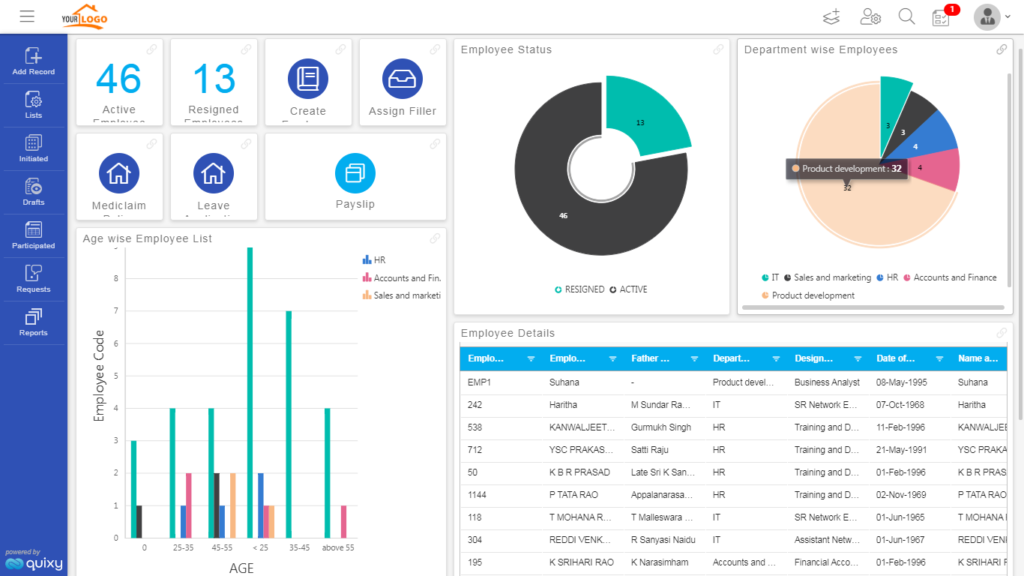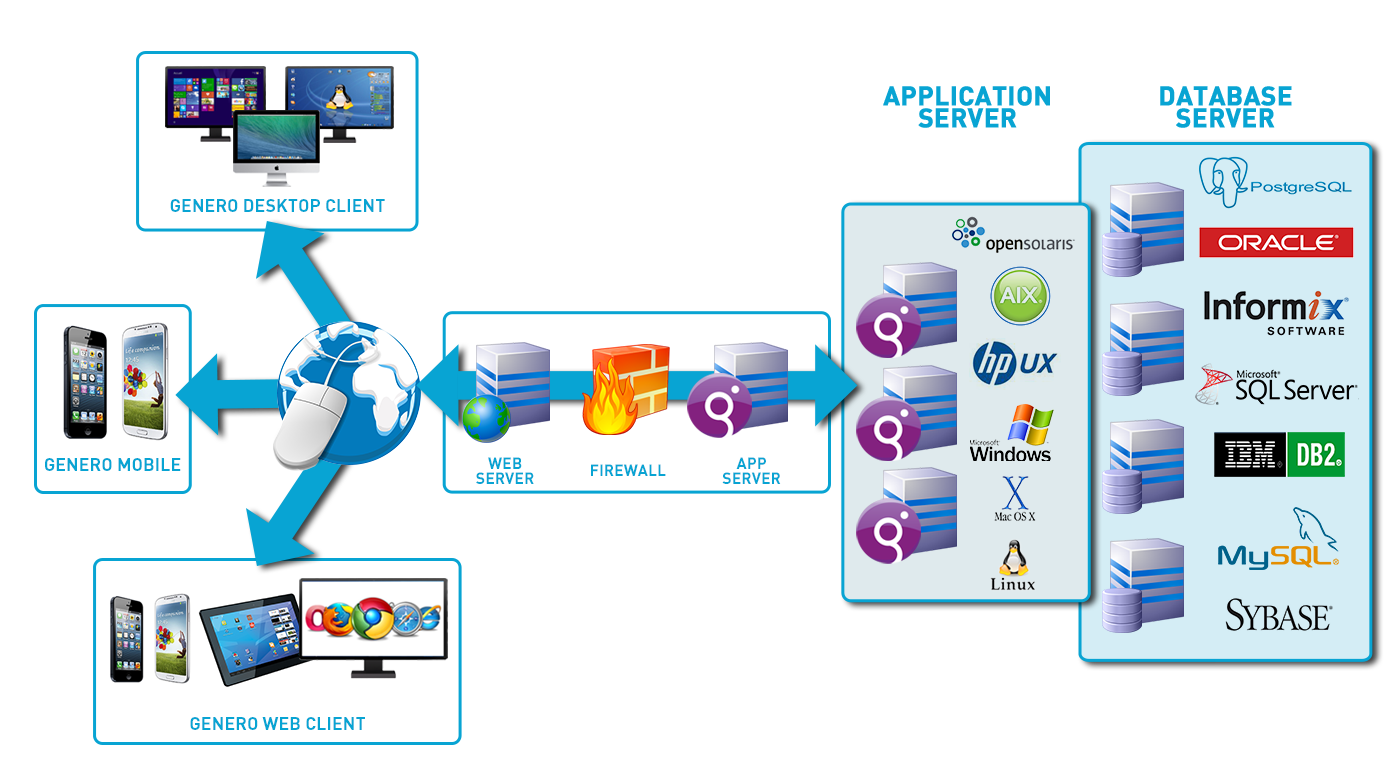Why No-Code is the Future of Open System Data Source Production for Companies
Why No-Code is the Future of Open System Data Source Production for Companies
Blog Article
Unlocking the Potential of Scalable Databases: No Coding Needed for Seamless Data Integration and Monitoring
The introduction of no-code options is changing exactly how companies come close to scalable data sources, allowing smooth information integration and monitoring without the demand for substantial coding abilities. This standard change offers substantial benefits, such as increased accessibility for non-technical customers and boosted functional performance. As organizations seek to harness the power of their data, the key functions and popular devices that facilitate this shift warrant closer exam. What implications do these advancements hold for the future of data-driven decision-making?
Recognizing Scalable Databases
How do scalable databases fit the growing demands of contemporary applications? Scalable data sources are designed to handle increasing volumes of information and customer requests without compromising performance.
In addition to scaling strategies, scalable databases typically integrate sophisticated architectural attributes, such as sharding and replication. Sharding splits data into smaller, workable pieces, allowing parallel processing and reducing action times. Replication guarantees data schedule and resilience by developing duplicates of data across numerous nodes, securing versus prospective data loss.
In addition, contemporary scalable databases take advantage of cloud computer technologies, enabling vibrant resource allowance based upon demand. This adaptability permits organizations to respond promptly to changing work, guaranteeing optimum efficiency and customer experience. As services increasingly depend on data-driven decision-making, understanding scalable databases becomes crucial for using their capacity in sustaining contemporary applications.
Advantages of No-Code Solutions
As organizations significantly adopt scalable data sources to manage their growing information needs, the demand for straightforward advancement devices has likewise surged. No-code solutions are arising as a crucial element in this landscape, supplying several crucial advantages that improve operational efficiency and access.

Secondly, these remedies significantly increase the growth process. By eliminating the demand for coding, companies can quickly model applications, iterate on layouts, and release services in a fraction of the time called for by standard methods. This dexterity allows services to respond promptly to market demands and altering conditions.
Furthermore, no-code platforms frequently come furnished with pre-built layouts and assimilation capacities, streamlining the connection with existing systems. This lowers the complexity generally connected with information combination, ultimately reducing the complete cost of possession. Because of this, organizations can focus on leveraging information insights as opposed to getting slowed down in technical intricacies, optimizing their critical possibility.
Secret Features for Information Integration
Effective data assimilation is important for companies seeking to harness the complete possibility of their scalable data sources. Secret functions that facilitate seamless data assimilation consist of durable data adapters, automated data mapping, and real-time information synchronization.
Robust data ports allow organizations to connect various information sources, whether they reside on-premises or in the cloud, making sure detailed accessibility to varied datasets - no-code. Automated data mapping simplifies the procedure of lining up diverse information styles and structures, enabling quicker and extra accurate assimilation processes. This function reduces the need for manual treatment, lowering the possibility for mistakes
Real-time information synchronization is another vital function that ensures data uniformity across systems. By upgrading data in real-time, organizations can preserve a updated and exact sight of their details landscape, which is crucial for timely decision-making. Furthermore, visual analytics and user-friendly dashboards boost the visibility of integrated data, enabling stakeholders to derive actionable understandings easily.
Last but not least, information administration capabilities make sure conformity with policies and inner plans, guarding delicate info while promoting a culture of information stability. Jointly, these functions encourage companies to achieve reliable and reliable information assimilation.
Popular No-Code Tools Available
Organizations increasingly count on no-code tools to enhance their data integration procedures and streamline workflows. These platforms remove the demand for extensive programming understanding, allowing individuals to create applications and manage data with instinctive aesthetic user interfaces. Amongst the most preferred no-code devices are Airtable, Zoho Maker, and Bubble, each offering one-of-a-kind attributes customized for numerous service i was reading this requirements.
Airtable combines the simplicity of spreadsheets with the performance of databases, allowing users to arrange and team up on information effectively. Zoho Maker gives an extensive suite of adjustable applications, allowing users to integrate and automate workflows with various other Zoho items perfectly. Bubble stands apart for its ability to produce sophisticated web applications without coding, catering to enterprises and start-ups alike.
Furthermore, tools like Zapier and Integromat promote automatic workflows by integrating numerous applications, making it possible for individuals to attach data resources easily. These no-code options not only save time yet likewise encourage teams to focus on critical initiatives instead than technological hurdles. As companies proceed to accept electronic improvement, the adoption of no-code devices is readied to revolutionize the method information integration and administration are approached, driving efficiency and innovation.
Real-World Use Instances
Various sectors have effectively applied no-code devices to deal with details challenges and improve functional effectiveness. In the medical care field, for instance, providers use no-code platforms to streamline client document monitoring and consultation scheduling. By incorporating various data resources without extensive coding, health care specialists can focus a lot more on person care instead basics of management jobs.
In retail, organizations leverage no-code databases to handle stock and sales information in real time. no-code. This enables fast decision-making relating to supply degrees and marketing approaches, inevitably improving customer fulfillment and sales efficiency
Additionally, economic establishments have actually taken on no-code solutions to automate compliance coverage and information evaluation, reducing hand-operated mistakes and speeding up response times to regulatory modifications.

These real-world usage instances illustrate the convenience and efficiency of no-code tools in various markets, confirming that scalable databases can drive technology and operational efficiency without the requirement for substantial programs expertise.
Conclusion
In conclusion, the combination of no-code options right into scalable database administration represents a substantial advancement in data dealing with capabilities. By promoting smooth links between diverse data sources and automating process, these tools encourage companies to effectively handle growing data volumes without the requirement for technical experience. The resultant improvement in functional performance and data-driven decision-making emphasizes the transformative possibility of these cutting-edge techniques within different markets, eventually supporting critical purposes and cultivating business growth.
Replication makes certain information schedule and longevity by developing duplicates of data throughout several nodes, protecting against possible information loss. - no-code
Robust data adapters make it possible for companies to connect various information resources, whether they live on-premises or in the cloud, making sure extensive accessibility to varied datasets. Automated data mapping streamlines the process of aligning inconsonant data layouts and frameworks, enabling for quicker and much more accurate combination processes.Real-time information synchronization is another essential feature that makes sure data uniformity across systems. By facilitating seamless links between diverse data resources and automating operations, these devices empower companies to effectively handle growing information volumes without the demand for technical know-how.
Report this page